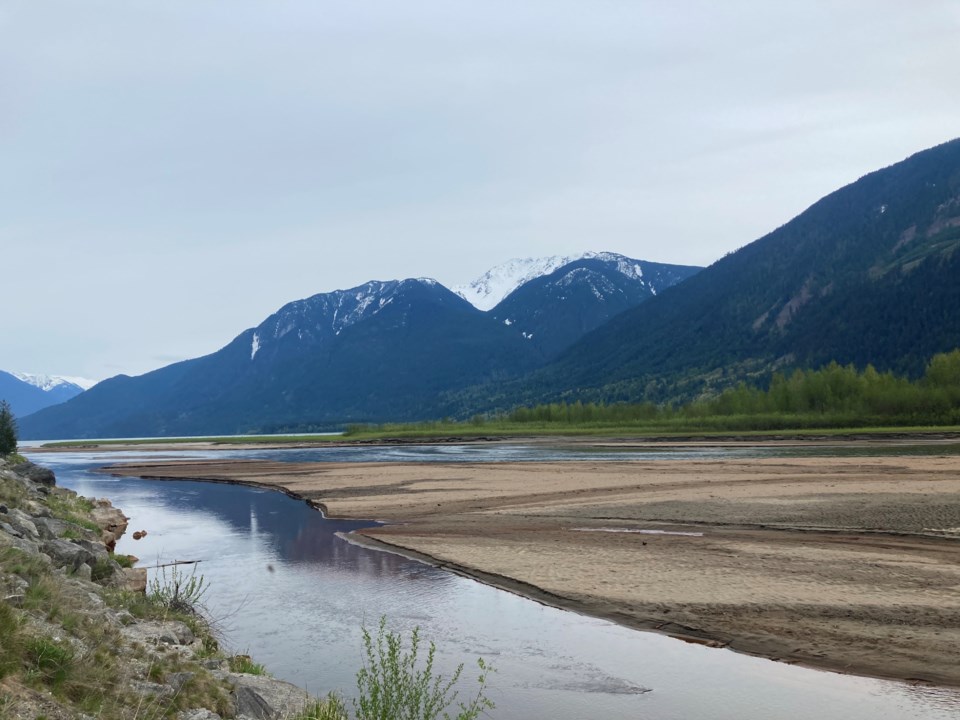The Village of Pemberton (VOP) is no stranger to large-scale natural disasters. Throughout the valley’s history, floods, in particular, have been a recurring challenge.
How the government handles and prepares for these kinds of natural disasters is a complex topic, but one that has fascinated environmental consultant and Pemberton resident Veronica Woodruff. To better understand the issue, Woodruff spent the last two years researching the subject for her master’s thesis.
On May 30, the VOP’s Committee of the Whole (COW) heard a presentation on Woodruff’s thesis, as well as recommendations on what different levels of government can do to improve disaster mitigation and communication.
“My research was based on how collaboration works between communities and governments,” Woodruff said. “Basically, I wanted to understand how that worked better, and how that either helped or hindered community preparedness.”
Through interviews, focus groups and by working closely with the Pemberton Valley Dyking District (PVDD), Woodruff identified several challenges facing governmental disaster communication, and provided half a dozen recommendations on ways to improve collaboration.
Woodruff’s research found that the valley is at extreme risk for disasters, and that such events bring the community together. It also found that intra-governmental and community collaboration helps acquire resources and expertise to deal with disasters, but there are barriers to this collaboration.
According to Woodruff, there are challenges around bureaucratic oversight; conflicting mandates; lack of resources during and before emergencies; lack of incentive to coordinate between agencies; risk aversion; and insufficient planning for new, cascading and emerging disasters.
“There are barriers to collaboration, and these are all things that you’d expect, like there’s a lot of bureaucratic oversight. There’s one department telling you to do one thing, and there’s another department telling you to do the exact opposite thing,” Woodruff said.
“There’s a lack of resources. People are busy. There’s no funding. There’s no time. There’s no expertise—all of these things.”
Regarding inter-governmental preparation for disasters, the Pemberton Valley Emergency Management Committee (PVEMC) is the main forum for discussing emergency management issues. The PVEMC is made up of staff and elected representatives from the Village of Pemberton, Lil’wat Nation, Squamish-Lillooet Regional District (SLRD) and the PVDD. Provincial and federal governments do not participate in the committee.
“Pemberton’s doing this really well with the PVEMC, where all the local governments can speak to each other regularly about different disaster management, whether it’s flooding or fire and what everybody’s doing; I think that’s a good starting point,” Woodruff said.
Recommendations
Woodruff laid out six recommendations to the VOP for improving intra-governmental and community communication, from straightforward objectives to more complex goals that require additional resources:
Allocating more funding to support community initiatives that increase collaboration for resilience;
Having local governments increase collaboration with the broader community through engagement;
Define how community expertise can be harnessed to support response and recovery from disaster;
The PVEMC members should facilitate opportunities for dialogue with other local agencies;
Developing a regional, all-of-society approach for disaster risk reduction in the Pemberton region;
And directing policy-makers to consider a process for implementing transitional strategies to increase community reliance.
According to Woodruff, significant work is already occurring. Still, these efforts need to move faster to keep up with the effects of climate change, which is leading to more unpredictable weather conditions and increased geological instability in the region.
“We’re just moving too slowly, because there’s a lot of people doing a lot of good work here. I think we need to work faster, and that really does just lie on governments,” Woodruff said.
“The provincial government is redoing their emergency legislation, and they’re investing in their watershed and flood strategies. All these things are happening. We must make them happen faster because things are changing faster.”
According to Pemberton Mayor Mike Richman, the VOP is considering Woodruff’s recommendations, but more work needs to take place to explain Pemberton’s unique situation and risks to higher levels of government.
“What’s difficult is we live on the ground here; we have an understanding of our area that, in fairness, provincial representatives can’t quite understand because they’re not here on the ground with us,” Richman said.
“When we look at our position with Meager Creek, and the landslide and the sediment deposits we get every year, that’s pretty unique to our area. One of the struggles is in maybe conveying that uniqueness to the province and then getting the proper funding.”
Recognizing that the province has to spread spending across B.C., Richman said he has spent considerable time as mayor advocating for increased mitigation funding, as investing in avoidance is more cost-effective than paying for responses and clean-up.
“There’s been an attitude shift, and I would like to do more of that shift from response to mitigation,” Richman said. “I think it saves the province more in the long run, and we will be better prepared for that. It’s a slow shift [but it has] to happen.”
Stewardship Pemberton is holding an event on June 12 at 6:30 p.m. at Town Square for residents to learn more about Woodruff’s disaster research.
To learn more about the valley’s current emergency measures, check out pemberton.ca/emergency-preparedness.




